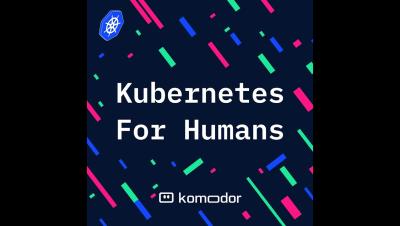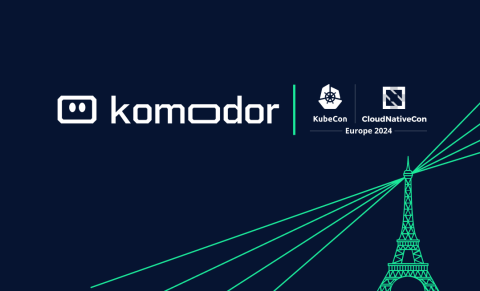Operations | Monitoring | ITSM | DevOps | Cloud
Komodor
KubeCon Europe 2024 Highlights
Komodor’s own Marino Wijay and other community members share insights from KubeCon EU 2024, exploring the latest developments in cloud-native technology and their experiences. Marino and the team will be having discussions on emerging trends, innovative solutions, and more in this engaging session.
#027 - Kubernetes for Humans Podcast with Ben Sigelman (ServiceNow)
Ben Sigelman is the General Manager of ServiceNow Cloud Observability, which solves for the reliability and performance of cloud and cloud-native applications while broadening the scope and leverage of the broader Now Platform. Previously, he co-founded and was CEO of Lightstep, which ServiceNow acquired in 2021, and co-created both the OpenTracing and OpenTelemetry projects. Ben also helped define modern observability with his work on tracing and metrics monitoring at Google (the Monarch and Dapper projects) and was a pioneer in SRE best practices and tooling.
Tried and True Migration to Kubernetes--An Authentic Guide
A few years ago, lift and shift to the cloud was all the rage––with the companies building those solutions being snatched up at exorbitant selling prices to the biggest cloud vendors. Nearly a decade, and multiple failed lift and shift migration stories later, we have now learned the hard way that slow and steady wins the race.
Why You Don't Need to Hire Kubernetes Experts
History has a tendency to repeat itself. This is because bad habits and anti-patterns are hard to break. And this remains the case with the latest sought-after engineering unicorn––the “Kubernetes expert”. These days, there is a veritable gold rush to hire the best and brightest Kubernetes wizards. Like all forms of expertise––this gold is rare, and as a result––is also costly. But this isn’t a new phenomenon in the technology world.
#026 - Kubernetes for Humans Podcast with BJ Badyk (Nexxen)
BJ Badyk is a human who desires an easier life. Nerd from birth, his curiosity led him down a path through the start of ISPs, Silicon Valley during the dot-com bubble, the last few years of the Playboy brand, and into the world of Adtech. He currently runs the platform engineering team at Nexxen, where they work on unique ways of handling millions of requests per second with Kubernetes. The team was an early adopter of Talos Linux, which they now run at scale. He presented at TalosCon 2023 and continues to pursue simple solutions to complex problems.
#025 - Kubernetes for Humans Podcast with Ashan Senevirathne & Joel Studler (Swisscom)
Ashan Senevirathne is an experienced Product Owner and Senior DevOps Engineer with a proven track record in driving innovation and efficiency in telecommunications. Currently with Swisscom, leading the development of a cloud-native orchestration framework for 5G Core using Kubernetes. Adept at optimizing release engineering processes, championing CI/CD workflows, and fostering cross-functional collaboration. Recognized for his expertise in Kubernetes, GitOps, cloud-native principles, and network orchestration.
KubeCon Wrapped: 5 Key Kubernetes Trends You Need to Know
This year’s KubeCon was a whirlwind of insights and innovations. It’s always exhilarating to see how far we’ve come and where Kubernetes is taking us next. So, let’s unpack the top trends that are setting the stage for the next wave of developments in the Kubernetes ecosystem.
Kubernetes in Modern Financial Institutions
Financial institutions face unprecedented challenges in today’s rapidly evolving technological landscape. The demand for agile, scalable, and resilient systems is at an all-time high, driven by a diverse and dynamic customer base that expects real-time, reliable services. This is where Kubernetes, a leading open-source container orchestration platform, emerges as a pivotal solution. Kubernetes has revolutionized software development and deployment.











